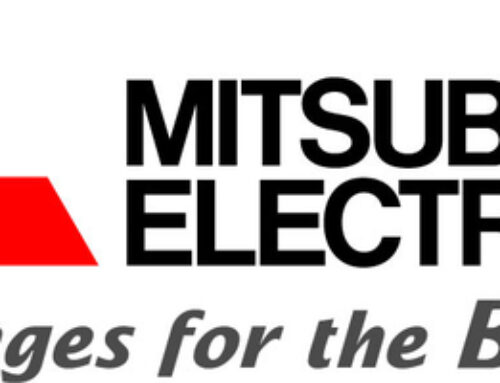It's 2024, and self-storage businesses are riding the technology wave, leveraging a variety of tools and resources that allow them to better serve their customers and run more efficient and profitable businesses. However, innovation evolves so rapidly that it can be difficult to keep track of the latest trends and developments. How can I avoid a wipeout?
In this article, we take a look at the latest technology innovations on the market, as well as the benefits and challenges associated with using the technology. We also asked industry experts for advice on understanding trends and assessing business needs.
latest trends
New technology trends are constantly hitting the self-storage industry. Among the latest are solutions that leverage artificial intelligence (AI) and remote management tools. AI testing is underway in the areas of reputation management, social media posting, and customer service. “AI is here to stay, and operators need to be smart about how they incorporate it into their technology roadmaps,” said William Warren Group Real Estate, which operates 314 facilities under the StorQuest self-storage brand. said Alyssa Parker, senior vice president.
Many operators want to experiment with AI. Tools now exist that can predict demand for storage units in a specific region, gather data from competitors to provide competitive pricing, and assist with marketing strategies, and SKS Management offers third-party management. points out David Doget, LLC revenue manager. Up to 29 locations.
Remote facility management is also a popular trend. “Operators are finally waking up to the fact that they don't need to have a manager on-site eight hours a day,” said Robert Chiti, CEO of kiosk provider OpenTech Alliance Inc. This will lead to reductions.” Center services and other technologies for the self-storage industry. Self-storage At his REIT, Public Storage, he added, using kiosk technology has reduced his annual workforce by 40% per location.
The flexibility provided by technology will allow managers at North Carolina-based American Storage South to work remotely and monitor multiple facilities simultaneously, said Mason Shaw, director of operations. That's what it means. The company's platform maintains the human element of customer service by allowing managers to greet and assist people in real-time using two-way video.
“The data points we can collect from these interactions allow us to understand our busiest days/hours/weeks of the month, provide real-time feedback to managers, and measure in-person conversion rates in ways we haven't done before. ” says Shaw.
Keep in mind that while remote management technology reduces labor costs and provides other benefits, it is not without its drawbacks. First, it can be uncomfortable for customers who prefer face-to-face interaction, especially older customers. In addition, reliance on technology will need to increase, and operators will need to invest more time in training staff to use technology effectively, Dozier says.
Parker cautions against using touchless, technology-driven services to completely replace field staff. “The industry has seen the emergence of many fully automated facilities during the pandemic that are now at least partially staffed. % because it cannot be replaced,” she explains. “Technology is best used to complement human capital, but in most cases it cannot completely replace it.”
Security is another major area of technological focus in today's self-storage industry. Popular products include electronic door locks, unit alarms, and smart cameras. American Storage South is piloting near-field communication (NFC) locks that integrate directly into a facility's asset management software and enable access control without batteries, Bluetooth, or networks. The company plans to fully transition to this technology in 2024.
Benefits
Technology has the potential to improve your self-storage business in many ways. Increased efficiency and a smoother customer experience (CX) are among the attractive perks.
“This simplifies administrative tasks and improves the overall management of a facility,” says Jim, owner of 3 Mile Storage Management, which helps clients understand their technology needs and implement new systems. Ross said. He specifically cited increased security, increased efficiency, and improved CX. Operators especially appreciate tools that streamline operations, such as software that integrates billing, customer communications, and facility maintenance.
Shaw added that technology can improve a facility's data analysis, marketing strategy and digital records management. When used effectively, this information can be a powerful asset to any self-storage business.
For Extra Space Storage, a self-storage real estate investment trust that operates more than 3,600 properties, including dozens of unmanned sites, data drives pricing strategy, marketing, acquisitions, feasibility and core operations, says James Hafen. It is the driving force behind the index. Senior Vice President of Product Development. In fact, he says, the company's growth has been fueled by “connected stores, efficient operating platforms, aggressive use of the web for customer acquisition, and data, data, data.”
The information provided by technology platforms will allow self-storage operators to better understand their customers and use that information to strategically market and dynamically price their units, Parker said. I am. “This allows us to extend the tenant lifecycle and create referral opportunities based on positive tenant experiences.”
However, the benefits of self-storage technology are not limited to facility operators. It also benefits customers whose expectations change rapidly.
“Today's tenants are accustomed to the everyday conveniences that technology provides in other areas of their lives,” says Parker. “To attract and retain guests who currently rent, operators must lower the barriers for guests to rent and stay.” Basic expectations include online rentals, digital security, automated Payment included.
Shaw's tenants are embracing new technology in a big way. They enjoy engaging with staff virtually through remote management systems and providing services at their convenience. While solutions that minimize face-to-face interaction are preferred by most consumers, “tomorrow they will change from consumer preference to demand,” Chitty says.
Tenants also appreciate the increased security. Access control systems and surveillance cameras increase facility security and improve the preservation of stored items, “which increases customer trust and satisfaction,” Ross explains.
pain
Although there are many benefits to using technology in self-storage, there is a price you have to pay, both literally and figuratively. “The cost of technology is a major barrier to faster adoption,” Hafen says. Some tools are easy to suggest. But replacing previously cheap and reliable options such as door latches and locks, he adds, “are very promising, but they are very expensive and have significant support costs.” Ta. Over time, he expects costs will improve.
There is also a battle between seamless integration and the exclusivity of private products. Self-storage operators are often expected to manage multipoint solutions such as cameras, locks, Internet of Things (IoT), and alarms that “have unique elements that prevent integration with existing or shared infrastructure.” Hafen says. This is impractical and may hinder widespread adoption of in-store and customer-facing technology.
Beyond integration and initial capital costs, Shaw cites training requirements, maintenance, and upkeep as potential implementation challenges. Staff understand that they are increasingly being asked to adapt to new tools, but Dozier says if it's too complex, he risks lower adoption rates among his team members.
Assess your needs
Determining whether the latest technology release is right for your self-storage business can be difficult. Great care is required. Here's our expert advice:
-
Dozier advises surveying tenants and asking for feedback on the items they currently use to determine whether new tools will meet their needs. Similarly, ask your staff if your technology is effective and how it is being received by tenants.
-
Ross says it's important to be flexible and adapt technology to your unique business model, especially if desired results aren't being achieved. Let's take an introspection of our operations.
-
Shaw advises conducting a needs analysis to identify areas where technology can streamline tasks, reduce manual labor, and improve overall efficiency. He must evaluate customer service, security, billing, and other operational processes.
-
Consider the future needs of your business. “Operators also need to consider the scalability of their technology and how it fits into their long-term business goals,” Ross says.
-
Another strategy is to look at what other facilities are doing and what's happening across the industry. Periodically check trends and benchmark against your competitors, suggests Ross.
-
Attend self-storage conferences, talk to other operators using the technology and visit vendors, Chitty says. He also recommends visiting the supplier's office and meeting the personnel who will provide support to the customer. Also, talk to the company's customers.
Meeting the technology demands of today's customers is becoming increasingly important to a facility's success. However, self-storage operations can be a significant investment, so it's often a good idea to start small. “Walk before you run,” says Chitty. “Try out the technology in one facility for a while before deploying it across your portfolio.”
Rachel French is a freelance content writer and copywriter. Her background is in B2B media and her web application copywriting. She has covered a wide range of industries and markets, including self-storage, as well as finance, food and beverage, healthcare, and nutritional supplements.she previously worked In self storage Moved from intern to deputy editor-in-chief.





